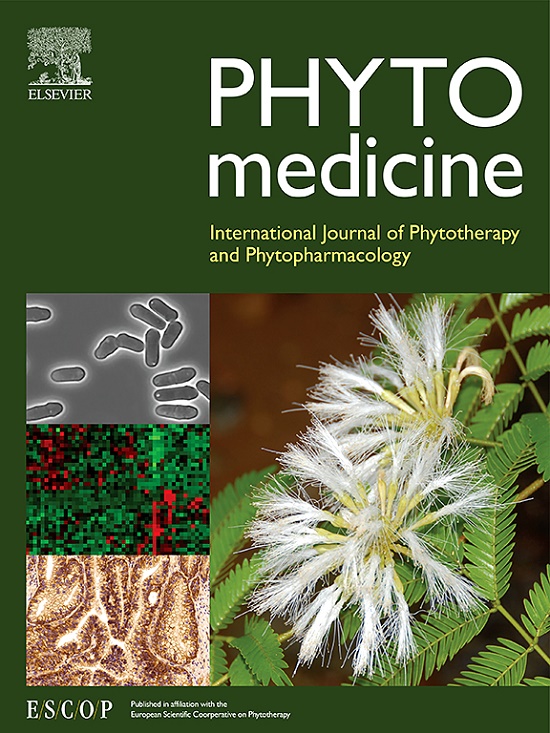13-Methylpalmatine alleviates bleomycin-induced pulmonary fibrosis by suppressing the ITGA5/TGF-β/Smad signaling pathway
IF 6.7
1区 医学
Q1 CHEMISTRY, MEDICINAL
引用次数: 0
Abstract
Background
Idiopathic pulmonary fibrosis (IPF) is an irreversible lung disease for which there is a lack of effective and safe therapeutic drugs. 13-Methylpalmatine (13-Me-PLT) is an active compound from Coptis chinensis, and no study has yet been reported on its pharmacological effects in pulmonary fibrotic diseases. The group has previously demonstrated the antimyocardial fibrosis efficacy of 13-Me-PLT but its effect on pulmonary fibrosis and its potential mechanism has not yet been investigated.
Purpose
The present research is designed to clarify the therapeutic potential and mechanism of action of 13-Me-PLT in IPF using a bleomycin (BLM)-induced mouse model of IPF.
Methods
In vivo, mice were administrated with BLM to establish the IPF model, and IPF mice were treated with 13-Me-PLT (5, 10, and 20 mg/kg) and pirfenidone (PFD, 300 mg/kg) by gavage. In vitro, we employed TGF-β1 (10 ng/ml)-induced MRC5 cells, which were then treated with 13-Me-PLT (5, 10, 20 μM) and PFD (500 μM). High-throughput transcriptome sequencing, molecular dynamics simulations, molecular docking and Surface plasmon resonance (SPR) were employed to elucidate the underlying mechanisms of 13-Me-PLT in mitigating IPF.
Result
In vivo experiments showed that 13-Me-PLT significantly ameliorated BLM-induced lung fibrosis in mice. In vitro studies, 13-Me-PLT showed good antifibrotic potential by inhibiting fibroblast differentiation. Transcriptomic analysis of mouse lung tissues identified ITGA5 and TGF-β/Smad signaling pathways as key targets for the antifibrotic effects of 13-Me-PLT. Molecular docking and kinetic analyses further supported these findings. Functional studies involving ITGA5 silencing and overexpression confirmed that 13-Me-PLT down-regulated ITGA5 expression and inhibited the activation of the TGF-β/Smad signaling pathway, confirming its mechanism of action.
Conclusion
To our best knowledge, these results provide the first insight that 13-Me-PLT is protective against BLM-induced IPF in mice. Unlike existing antifibrotic drugs, 13-Me-PLT specifically targets the ITGA5/TGF-β/Smad signaling pathway, offering a novel and potentially more effective therapeutic approach. This study not only validates the antifibrotic efficacy of 13-Me-PLT but also elucidates its unique mechanism of action, these findings may provide an opportunity to develop new drugs to treat IPF.

求助全文
约1分钟内获得全文
求助全文
来源期刊

Phytomedicine
医学-药学
CiteScore
10.30
自引率
5.10%
发文量
670
审稿时长
91 days
期刊介绍:
Phytomedicine is a therapy-oriented journal that publishes innovative studies on the efficacy, safety, quality, and mechanisms of action of specified plant extracts, phytopharmaceuticals, and their isolated constituents. This includes clinical, pharmacological, pharmacokinetic, and toxicological studies of herbal medicinal products, preparations, and purified compounds with defined and consistent quality, ensuring reproducible pharmacological activity. Founded in 1994, Phytomedicine aims to focus and stimulate research in this field and establish internationally accepted scientific standards for pharmacological studies, proof of clinical efficacy, and safety of phytomedicines.
 求助内容:
求助内容: 应助结果提醒方式:
应助结果提醒方式:


